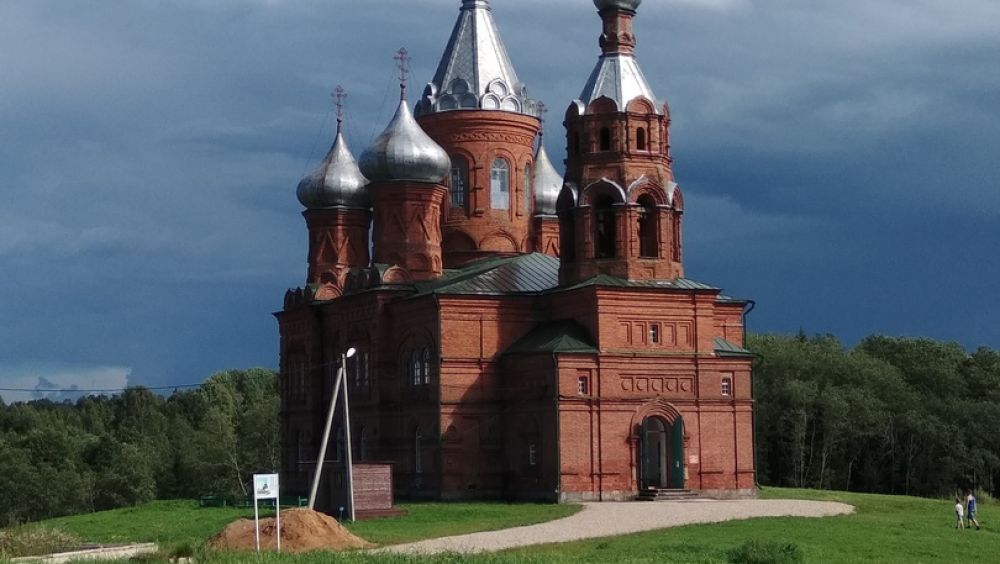The women’s monastery of St. Olga
Vue d'ensemble
Ольгинский женский монастырь
(Россия, Тверская область, Волговерховье)
По инициативе жителей волжских городов, стремившихся отметить духовную значимость начала великой русской реки, на добровольные пожертвования начали строить в селе Волго-Верховье каменный храм. Большую помощь средствами оказывало Всероссийское общество Святой Ольги.
В городе Осташкове создали уездный строительный комитет по возведению храма у истока Волги и 17 апреля 1902 года был заключен договор с зодчим, мастером каменных дел из Осташкова Иваном Николаевичем Суравковым.
Каменная церковь на истоке Волги (самая длинная река Европы) была очень красива. Главный престол – Спасо-Преображенский, правый придел посвящен святой княгине Ольге, левый – Иоанну Предтече. Пятиглавый храм возвели в псевдорусском стиле.
Проект здания выполнил в 1904 году тверской архитектор Виктор Назарин. Сохранившаяся гравюра проектного чертежа собора явно свидетельствует, что каменный храм истока Волги повторяет формы московского Покровского собора на Красной площади, более известного как собор Василия Блаженного, который был построен неизвестным западноевропейским мастером, предположительно итальянцем, как и значительная часть сооружений Московского Кремля, возведённых ранее. Отсюда и неповторимый стиль, сочетающий в себе традиции, как русского зодчества, так и европейского зодчества эпохи Возрождения. Стремление повторить на истоке Волги собор Василия Блаженного с Красной площади Москвы возникло не случайно: этим подчеркивалась духовная взаимосвязь прославленного собора столицы России с храмом у начала великой русской реки.
[ENGLISH VERSION] The women’s monastery of St. Olga
(Russia, Tver region, the Volga river’s uppermost section).
At the discretion of Volga region residents seeking to note the spiritual significance of the great Russian river source, the stone temple in Volgo-Verhovye village was going to be built on donations from volunteers. The great help was provided by the All-Russian society of Saint Olga.
A country construction committee from Ostashkov was established to build a temple at the source of Volga river. On the 17th of April in 1902 a contract was concluded with the architect and with the master of stone from Ostashkov whose name was Ivan Nikolaevich Suravkov.
The stone church at the source of Volga river (it’s the longest river in Europe) was very beautiful. The high altar of the transfiguration, the right side-altar is devoted to the Saint Olga, the left - to John the Baptist. The five-domed temple was built in the pseudo-Russian style.
The project of the building was executed in 1904 by the Tver architect Victor Nazarin.
The remained engraving of the design drawing of cathedral obviously demonstrates that the stone temple at a source of Volga repeats forms of the Moscow Cathedral of the Protection of Most Holy Theotokos in Red Square, better known as St. Basil's Cathedral which was constructed by the unknown Western European master, presumably the Italian, as well as a considerable part of the constructions of the Moscow Kremlin built earlier. This unique style combines traditions of the Russian architecture and the European architecture of Renaissance.
The aspiration to repeat at a source of Volga St. Basil's Cathedral from Red Square of Moscow arose not accidentally: it emphasized spiritual interrelation of the glorified cathedral of the capital of Russia with the temple at the source of the Great Russian River.
